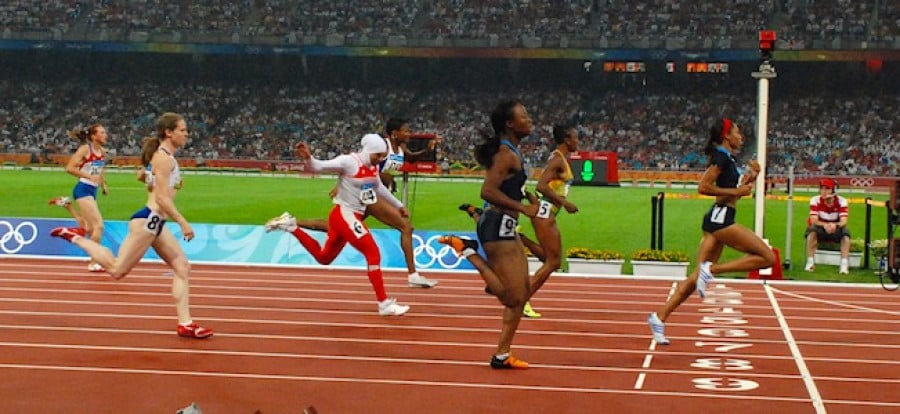Video technology in sports adjudication: Part 1 – use in the courts

In this two part feature, the author investigates and offers critical analysis on the history and growth of the use of video technology in sports adjudication. Part 1 below will focus on the evolving use of video as admissable evidence in the courts, while Part 2 switches to video’s increasing uses and applications on the field of play itself.
Background
The initial impetus to investigate the use of video in decision-making process both on and off the sports field came from the rather confused introduction of wider adjudication powers for the telvision match offical (“TMO” or "video refeeree”) in the Super XV professional rugby union competition. First introduced in the old Super 12 competition, the powers of the TMO were significantly widened from the beginning of the 2013 season even though weeks earlier such extension had been ruled out by the head of SANZAR (the administrative body for the Super 15 competition).1 Subsequently, there were in the early part of that season, a number of contentious decisions that threw the practical application of the expanded TMO powers into the spotlight, and there have also been instances where the technology itself has been called into question.
This author’s research revealed that the drive to incorporate technological advances for rule adjudication on the sports field mirrored the increasing use of technological devices in both law enforcement and legal proceedings. The growing use of technology to permit more accurate and timely decision making enhances and informs developments in the framework of procedural justice. Both in the courts and sporting arenas, there is an identifiable tendency to look for best practice elsewhere to indicate what the acceptable standards should be. As Drake J explained in Elliott v Saunders,2 a leading judgment in the development of negligence claims resulting from injury sustained on the sports field:
“Where [a wrong decision of the referee] has led, for example, to a player suffering serious disciplinary action affecting his future, it must surely be right to use the video recording to correct an injustice. If it shows a referee made a mistake ... then it would be wholly wrong not to use the video.”
This was a clear encouragement to the English footballing authorities to use video, while at the same time setting guidelines for its use – to help referees to make a definitive ruling and to correct injustices that have affected a professional’s future earnings. As a consequence, the English Football Association (The FA), as do most national sporting organisations, uses video footage to allow a player to appeal against a sending-off or a caution, and it also uses video to charge players with disciplinary offences where the referee has missed them.
This article will however concentrate on the use of video technology for in-game adjudication for what should be relatively uncomplicated decisions over scoring, game play and rules infractions. However, the acceptance of the use of video technology has been neither straightforward nor uncontentious – both in the legal and the sporting contexts. In fact, the use of technological advancements has been piecemeal as well as subject to numerous constraints and exceptions in the courts; a history that is mirrored by the contribution of technological developments in decision making on sporting fields.
Video evidence in the courts
The acceptance (or otherwise) of technological advancements in the courtroom originally concerned the admissibility photographs, possibly the first major advance in “recording” technology. Until the early 20th century (i.e. when photography was a very “new” technology”) photographic evidence was almost always limited to the issue of proving identity. The courts accepted that at least for the purposes of discovery, photographs were documents and therefore, liable to the same rules and exclusions as other documentary evidence.
To continue reading or watching login or register here
Already a member? Sign in
Get access to all of the expert analysis and commentary at LawInSport including articles, webinars, conference videos and podcast transcripts. Find out more here.
- Tags: Adjudication | Australia | Australian Rugby Union | British Broadcasting Corporation (BBC) | Canada | Canadian Supreme Court | Contract Law | Court of Arbitration for Sport (CAS) | Dispute Resolution | England | Football | Governance | Hawk-eye | Intellectual Property | Korea | National Football League (NFL) | National Hockey League (NHL) | New Zealand | Olympic | Regulation | Rugby | Rugby Union | Super League | Tennis | The FA | United States of America (USA) | Video Replay
Related Articles
- Goal-line technology or instant replay (video evidence)?
- Digital and social media rights: Can the fans be forced to take down online goal videos and should they be?
- Key sports law cases and developments to watch in 2015
- Video technology in sports adjudication: Part 2 – use on the sports field
Written by
Craig Dickson
Craig Dickson is a senior lecturer in the Law School at AUT University in Auckland where he teaches Sports Law as part of the regular undergraduate LLB electives and he has occasionally appeared in front of sporting disciplinary tribunals. After obtaining an LL.M. at the Centre for Innovation Law and Policy, University of Toronto, he spent some years in private practice before taking up his current position. Craig’s other teaching and research interests include insurance law and intellectual property law and he was recently appointed as inaugural treasurer of the newly formed Asia-Pacific Copyright Association.




